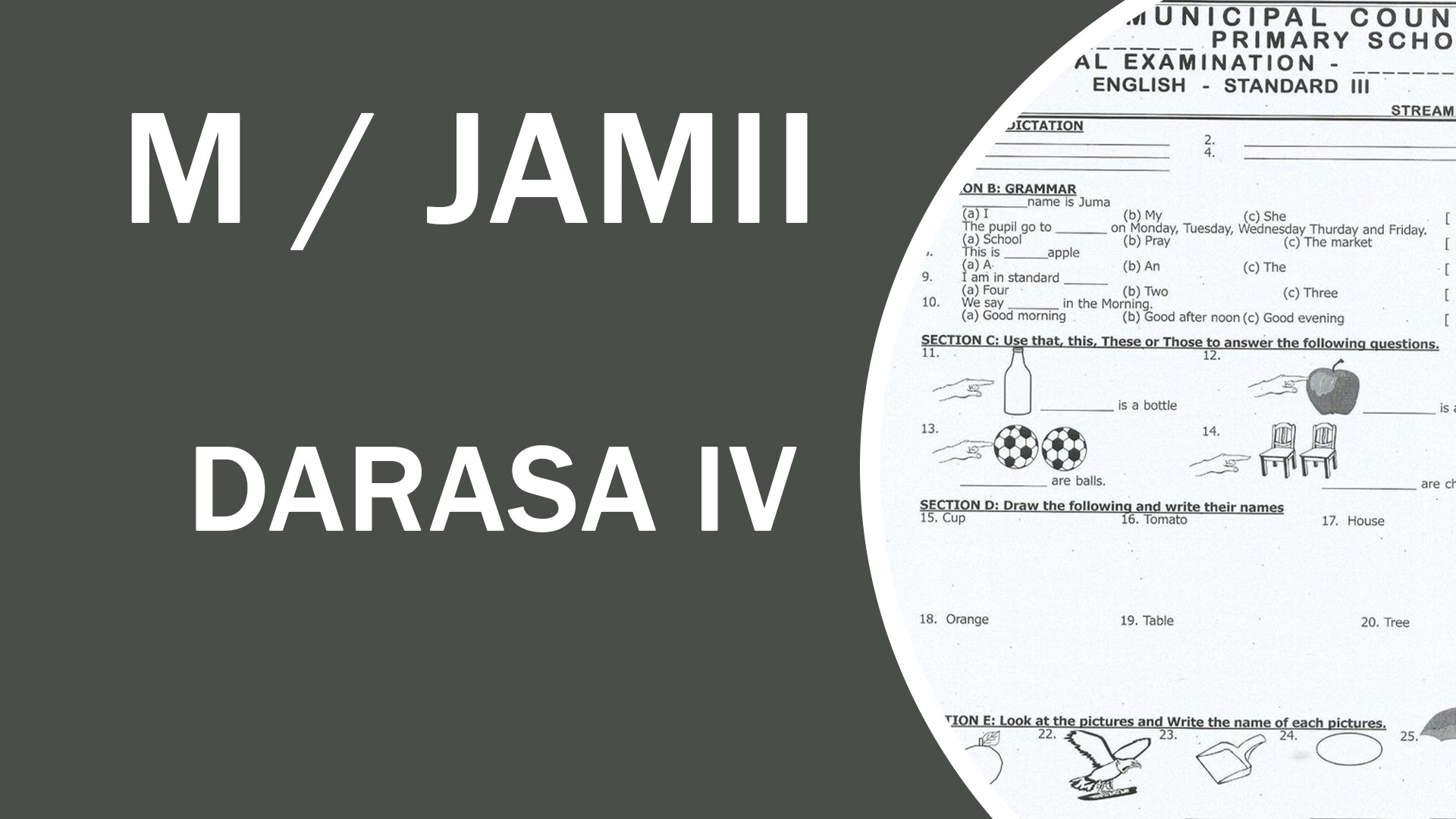Here are the outcomes for the "Jamii" (Class IV) course on your Edukea website:
M/ Jamii Class IV Outcomes
By the end of this course, students will be able to:
-
Understand the Role of Social Institutions:
-
Explain the function of key social institutions (schools, hospitals, markets, etc.) and how they contribute to the functioning and well-being of a community.
-
Identify the importance of each institution in ensuring that the needs of the community are met.
-
-
Appreciate Cultural Diversity:
-
Recognize and celebrate the cultural differences that exist within their community and in other regions.
-
Understand how different traditions, languages, and practices contribute to the richness and identity of a community.
-
-
Explore Economic Activities:
-
Understand the economic activities that sustain a community, such as agriculture, trade, craftsmanship, and services.
-
Analyze how these economic activities impact the local and national economy.
-
-
Understand Leadership and Governance:
-
Identify different leadership structures in communities, such as local leaders, councils, and government representatives.
-
Understand the decision-making processes and the role of leadership in community development.
-
-
Recognize Community Challenges:
-
Identify common challenges that communities face, such as poverty, inequality, environmental issues, and lack of access to resources.
-
Explore practical solutions that communities use to overcome these challenges.
-
-
Promote Social Responsibility:
-
Demonstrate an understanding of their own role in the community and how they can contribute to its development through responsible actions.
-
Advocate for positive change by taking part in community initiatives (e.g., helping in local projects, contributing to social harmony).
-
-
Critical Thinking and Problem-Solving:
-
Develop critical thinking skills by analyzing real-world community issues and proposing solutions.
-
Engage in problem-solving exercises that help address local community needs.
-
-
Communicate Effectively About Community Issues:
-
Present and discuss ideas about community development, challenges, and solutions both in written and spoken forms.
-
Work collaboratively with peers to create group projects or presentations related to community topics.
-
These outcomes ensure that students not only understand the core concepts of their community but also develop skills to actively contribute to social, economic, and cultural development.
Let me know if you’d like to adjust or add anything!
Here are the requirements for the "Jamii" (Class IV) course on your Edukea website:
M/ Jamii Class IV Requirements
To fully engage with and benefit from the "Jamii" course, students should meet the following requirements:
-
Basic Understanding of Social Studies:
-
Students should have a foundational understanding of their community, including concepts from previous classes like family, culture, and basic roles within a community.
-
-
Device with Internet Access:
-
A computer, tablet, or smartphone with internet access is necessary to access the video lessons and any supplementary learning materials, such as quizzes, assignments, or discussion forums.
-
-
Notebook and Writing Tools:
-
A notebook for taking notes, completing activities, and recording reflections or answers to guided questions presented in the videos.
-
-
Basic Vocabulary:
-
Familiarity with basic social studies vocabulary, such as terms like "culture," "economy," "government," and "community," will be helpful. Definitions will be covered during the lessons.
-
-
Active Participation:
-
Encourage students to engage actively in discussions, activities, and exercises. This includes participating in class discussions (whether virtually or in-person) and completing assignments.
-
-
Real-World Observation:
-
Students should be encouraged to observe and reflect on their own community: How do schools, hospitals, markets, and other institutions function? How do they help solve community challenges?
-
Students may also be asked to visit local institutions (like a health clinic or marketplace) or interview community members to understand these systems better.
-
-
Collaborative Learning:
-
Group work or peer discussions may be incorporated. Having an ability to work cooperatively with classmates is key to fully understanding the course concepts.
-
-
An Interest in Community Development:
-
A curiosity and willingness to explore issues facing the community, as well as an interest in how communities evolve and work together to overcome challenges.
-
-
Parental or Teacher Support (Optional):
-
For younger learners, assistance from parents or teachers may be beneficial in facilitating discussions, guiding observations, or helping with some of the more complex topics.
-
These requirements ensure that students are well-prepared to learn, engage, and apply the concepts from the Jamii Class IV course to real-world situations. Let me know if you'd like to modify or add anything!
Here’s a suggested description for the "Jamii" (Class IV) content on your Edukea website:
Jamii (Class IV) - Social Studies:
In Class IV, students will continue exploring the concept of "Jamii" with a deeper focus on the social, economic, and cultural structures that form the foundation of communities. This course will emphasize how communities develop and thrive, and the importance of responsible citizenship. Topics covered include:
-
The Importance of Social Institutions: Understanding the roles of institutions like schools, hospitals, and markets in maintaining order and well-being within a community.
-
Cultural Diversity in Communities: Learning about the rich variety of cultural practices, beliefs, and traditions that exist within different communities, and how they contribute to the community's identity.
-
Economic Activities in Communities: Exploring how people earn a living within different communities (farming, trade, craftsmanship, services) and how these activities impact the local and national economy.
-
Leadership and Governance: An introduction to how communities are governed, with a focus on leaders, local councils, and decision-making processes that affect community development.
-
Community Challenges and Solutions: Discussing challenges like poverty, environmental issues, and social inequalities, and exploring solutions that communities implement to address these problems.
This course encourages students to think critically about their role within their community, recognize the importance of various institutions, and understand how working together can solve community challenges.
Let me know if you'd like to refine this description further!
